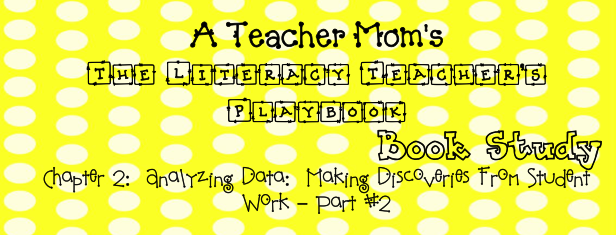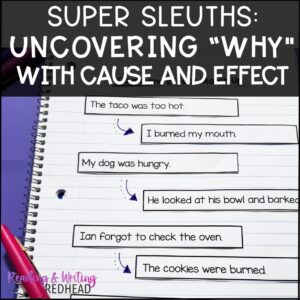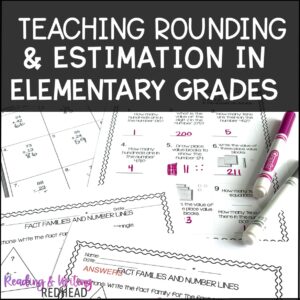Hi everyone! I am back with Week 3 of our book study for The Literacy Teacher’s Playbook by Jennifer Serravello!

This part of the chapter starts with information on Running Record Miscue Analysis- now I have done a lot of these but always feel lie i could use a refresher. This is great for folks like me but also it totally explains what running records are and gives beginners the information they need to get started!
The next section goes into detail about observing conversations. Seravello suggests you record a student’s conversation with their book groups or during partner work. She give you a great chart of Conversation Look Fors. She has questions to ask yourself such as “Is the student able to offer ideas that follow the main topic of conversation” and “What does the student dfo when an idea is offered that differed from his own?” Serravello then explains where to look to get the answer to the question such as “Look for a moment when a member of the conversation offers and idea that different from the child whose conversation you’re evaluating. See what the student does next” and offers an idea, such as “the student should be able to stay on topic”. Super easy to follow and practical! I also appreciate that she offers an example of the conversation of one of her students and her analysis and summary of her findings. Many of us need to be able to summarize observational data for meetings and report and this is a great example and guide.
The next section is titled “Making Discoveries from Narrative Writing” followed by “Studying Writing Engagement”, “Making Discoveries from Informational Writing, “Making Discoveries from Opinion Writing” and a wrap up. In the writing sections, she again provides helpful charts of Look-Fors. she breaks these down into different categories. For example in Opinion Writing she has a chart for focus and a chart for structure. Again, she provides us with a question to ask sch as “Is the writer’s opinion clear?”, where to look to get that information and tells you the ideal; in this case “Typically, a writer will state then claim or opinion up front, at the beginning of the piece”. I LOVE that she goes in to such detail about analyzing writing and breaks it down into TYPE of writing . With the new Common Core State Standards, I notice an increased focus on specific types of writing so we as teachers need to be able to determine what information we can glean from each type of writing and how we can use that to help the student.
Chapter 2 alone contains so much useful information that I can’t wait to see what next week brings with chapter 3. Come on back to see. Also be sure to enter our rafflecopter for prizes and hop around to see what my fellow bloggers thought of this chapter!







